| |||||
| Decades: | |||||
|---|---|---|---|---|---|
| See also: | |||||
Events in the year 1948 in Costa Rica .
| |||||
| Decades: | |||||
|---|---|---|---|---|---|
| See also: | |||||
Events in the year 1948 in Costa Rica .
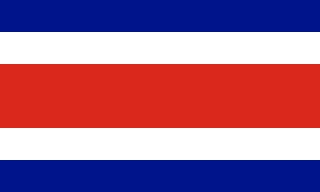
Costa Rica, officially the Republic of Costa Rica, is a country in the Central American region of North America, bordered by Nicaragua to the north, the Caribbean Sea to the northeast, Panama to the southeast, the Pacific Ocean to the southwest, and maritime border with Ecuador to the south of Cocos Island. It has a population of around five million in a land area of 51,060 km2 (19,710 sq mi). An estimated 333,980 people live in the capital and largest city, San José, with around two million people in the surrounding metropolitan area.
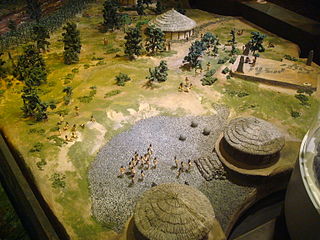
The first indigenous peoples of Costa Rica were hunters and gatherers, and when the Spanish conquerors arrived, Costa Rica was divided in two distinct cultural areas due to its geographical location in the Intermediate Area, between Mesoamerican and the Andean cultures, with influences of both cultures.

José María Hipólito Figueres Ferrer served as President of Costa Rica on three occasions: 1948–1949, 1953–1958 and 1970–1974. During his first term in office he abolished the country's army, nationalized its banking sector, and granted women and Afro-Costa Ricans the right to vote, as well as access to Costa Rican nationality to people of African descent.
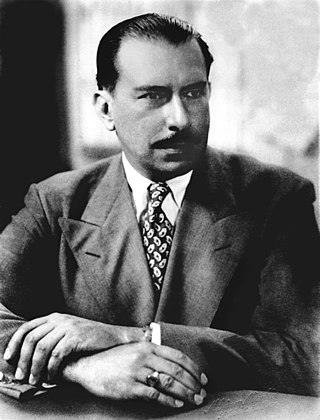
Teodoro Picado Michalski was the president of Costa Rica from 1944 to 1948.

The Costa Rican civil war was a civil war in Costa Rica from 12 March to 24 April 1948. The conflict began after the Legislative Assembly of Costa Rica, dominated by pro-government representatives, voted on 1 March 1948 to annul the results of the presidential elections of 8 February, alleging that the triumph of opposition candidate Otilio Ulate over the ruling party's Rafael Ángel Calderón Guardia had been achieved by fraud. This triggered an armed uprising led by José Figueres Ferrer, a businessman who had not participated in the elections, against the government of President Teodoro Picado.
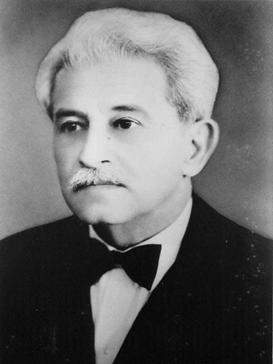
José María Vicente Esteban Rafael de Jesús Calderón Muñoz, known as Rafael Calderón Muñoz was a Costa Rican politician and physician. He is cited as "one of the leaders of a circle of Catholic politicians with social concerns". Calderón Muñoz was vice president from 1940 until his death.
Chinese people have been immigrating to Costa Rica since the mid-nineteenth century. They come from The People's Republic of China, and from Taiwan. The Sino-Costa Rican community is of great cultural, economic and social importance. It is one of the main Chinese communities in America, in the Caribbean Basin it is only surpassed by that of Panama, with around 9,000 citizens living in the country.

Rafael Ángel Calderón Guardia was a Costa Rican medical doctor and politician, who served as President from 1940 to 1944.
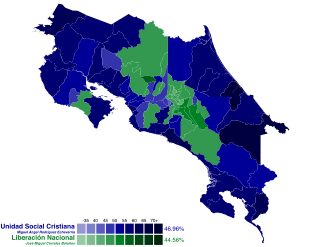
General elections were held in Costa Rica on 1 February 1998. Miguel Ángel Rodríguez of the Social Christian Unity Party won the presidential election, whilst his party also won the parliamentary election. Voter turnout was 70%, the lowest since the 1950s.

Trabajo ('Work') was a weekly newspaper published from San José, Costa Rica, from 1931 to 1947. It was the organ of the Communist Party of Costa Rica. Trabajo provided ample coverage of trade union activism. Moreover, the newspaper frequently reproduced proletarian poetry.

Leo R. Sack was an American journalist and diplomat who served as ambassador to Costa Rica from 1933 to 1937.

Ángela Acuña Braun, also known as Ángela Acuña de Chacón,, a Costa Rican lawyer, women's rights pioneer and ambassador, was the first woman to graduate as a lawyer in Central America. Orphaned at the age of 12, she was raised by her maternal aunt and uncle, attending elementary school and beginning high school in Costa Rica. She continued her education in France and England, gaining exposure to the ideas of women's rights. Returning to Costa Rica in 1912, she published articles in support of women's equality. She attended the boys' lyceum or high school where she passed the bachillerato, a prerequisite for entering law school. She embarked on law studies in 1913, leading to a bachelor's degree in 1916. As women were barred from entering the profession, Acuña immediately presented a reform to the civil code allowing this, which was adopted.
Lidia Fernández Jiménez was a Costa Rican suffragist and feminist active between 1920 and 1940 in the struggle for women's right to vote.

Emilia Prieto Tugores was a graphic artist, educator, singer, composer, and scholar of folklore from the Central Valley of Costa Rica, one of the few women to enter the field of artistic satire in the first half of the 20th century. Her work was recognized with a Joaquín Monge Prize for cultural periodism in the 1984. Studying her native folklore, Prieto's collection of songs "influenced [a] generation of troubadours". The Nacional de Patrimonio Cultural Inmaterial Emilia Prieto Tugores was named for her, and awarded for the first time, in 2015.

María Fernández de Tinoco was a Costa Rican writer and amateur archaeologist who became the First Lady of Costa Rica in 1917. Educated in England, Fernández studied archaeology, art and music before returning to Costa Rica. Involved in amateur archaeological digs and charitable works, she wrote articles for publication in local newspapers and magazines and published two novels. When her husband staged a coup d'état and was later elected President of Costa Rica, she served as First Lady from 8 June 1917 to 20 August 1919. When he resigned from his post due to mismanagement, the couple moved to Paris, where she participated in archeological and artistic works until his death in 1931. From 1932 to 1934, she resided in Norway before returning to Costa Rica, where she resumed her archeological studies and publishing, while working for the National Museum of Costa Rica. Involved with the Red Cross, she was awarded the Florence Nightingale Medal in 1949 and in 2012, the Ministry of Culture of Costa Rica produced a documentary about her life.
General elections were held in Costa Rica in April 1872.
General elections were held in Costa Rica on 4 April 1886. After the death of Próspero Fernández Oreamuno in March 1885, Bernardo Soto Alfaro took over the presidency temporarily for the remainder of the term. Soto was a thirty-year-old young man who had to command the country in the war against Guatemala that sought to re-establish the Federal Republic of Central America. Soto was a freemason and liberal, belonging to "The Olympus", a group of liberal intellectuals who would have a great influence on Costa Rican politics and many would hold the Presidency of the Republic.
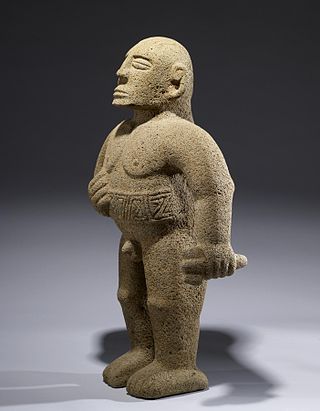
The Huetares were an important indigenous group of Costa Rica, who in the mid-16th century lived in the center of what is now the country. They are also mentioned with the name of güetares or pacacuas. Huetares were the most powerful and best-organized indigenous nation in Costa Rica upon the arrival of the Spaniards. During the 16th century, various chieftains dominated from the Costa Rican Atlantic coast to the Atlantic Slope. The Spanish chronicles mention a myriad of towns and the kings that ruled them, among them the Garabito Empire, located on the Central Atlantic Slope and the Tárcoles River basin, to the Virilla River and the Cordillera Central; the Kingdom of Pacaca, in the current canton of Mora, and the Lordship of el El Guarco, in the current Guarco Valley, in the Cartago Province, to the plains of the Central Caribbean and Chirripó. Their culture belonged to the Intermediate Area, and it stood out mainly for their works in stone, such as metates, sculptures, tables and ceremonial altars; and the non-practice of anthropophagy or cannibalism. Its language, the Huetar language, one of the so-called Chibcha languages, became the Lingua franca of the country. Although this language is extinct, it survives in a large number of place names in Costa Rica such as Aserrí, Tucurrique or Barva.

The Founding Junta of the Second Republic was a de facto government which existed in the Republic of Costa Rica from May 8, 1948, to November 8, 1949, with the overthrow of the constitutional president Teodoro Picado Michalski, by a group of revolutionaries headed by José Figueres Ferrer.

Sara Casal de Quirós was a Costa Rican teacher, writer and community worker. She was a pioneer of the women's rights movement in Costa Rica and wrote the first book defending women's rights in the country.